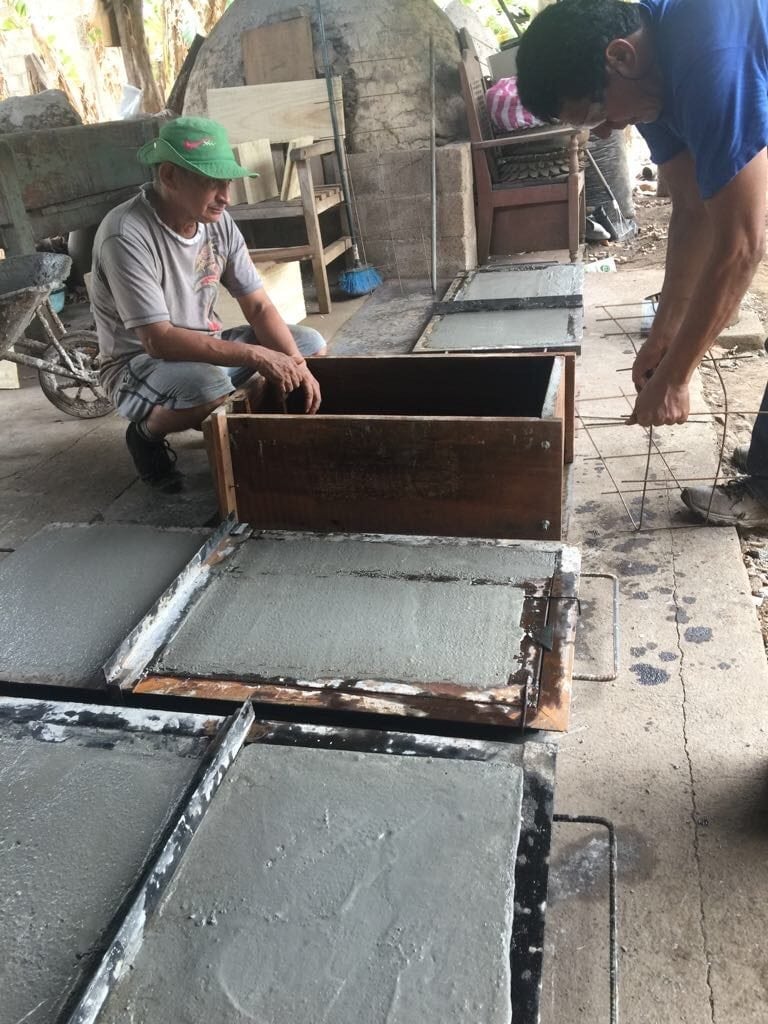
Ventilation may be as important as cleaner cookstoves to clear the air in kitchens with open cooking fires like this one. Source: Advances in Cookstove Field Monitoring Webinar
In laboratory tests, clean-burning stoves smoke only a little and emit few small particles and gases that can lead to respiratory disease. That can have powerful, life-saving effects in developing countries where women and children cook over open wood fires in their kitchens. As many as 2 million people die each year from respiratory illnesses, things like lung cancer, pneumonia and chronic obstructive pulmonary disease, that experts have blamed on smoky stoves and lanterns in the home.
But ventilation may matter just as much, if not more than stove design.
“In poorly ventilated dwellings, indoor air pollution can be 100 times higher than acceptable levels,” which the World Health Organization has set at 50 µg/m3 of small particles and 10 parts per million of carbon monoxide in a 24-hour period, Min Bikram Malla at Practical Action in Nepal, and his colleagues wrote in the first edition of DEMAND (page 24).
And now there is evidence that better stoves could actually worsen the air quality in kitchens with no ventilation. Improved stoves may reduce air quality by 10 to 30 percent in kitchens with poor air flow, according to a research team at Michigan Technological University in Houghton, Michigan. It’s not clear why, but it may be because the stoves combust differently in a closed kitchen than they do in a lab, the researchers say.
On the other hand, ventilating a cooking area could reduce carbon monoxide and small particles by about half, the study found.
“The improved stoves likely deviate from optimal performance in a poorly ventilated home.”
The results come from three kinds of data: Surveys conducted at people’s homes in 13 countries, cooking tests in a lab built to perform like kitchens that have different kinds of ventilation and stoves, and a digital model that simulates situations and predicts the outcomes. The researchers published their results online in the International Journal for Service Learning in Engineering: Humanitarian Engineering and Social Entrepreneurship.
The study is “excellent” and “exhaustive” and should be on the reading list for anyone working on biomass-fueled kitchen project, Charles Newman, the Kenya Country Director for Kounkuey Design Initiative who has expertise in building ventilated kitchens and improved stoves, told E4C by email.
“While the focus is on ventilation, arguably a short-term priority in comparison to fuel consumption and environmental degradation, the report does consider different stove technologies to illustrate the pros – and the often overlooked cons – of each,” Newman says.
“No single ventilation strategy is a one-size-fits-all solution. And I would say that same goes for improved stoves too.”
We spoke with Mollie Ruth, who was involved in the research. This is what she said.
E4C: Is ventilation on the radar for organizations that are working now to improved indoor air quality?
MR: No, ventilation, aside from cookstoves that incorporate a chimney or other ventilation system to the outside of the kitchen, is not being considered by most of the organizations involved with indoor air. We speculate that there may be two main reasons. One, an “invisible” concept is hard to sell, both in the sense of understanding and in the marketplace. Cookstoves are easier to design and distribute in the current global economy (and there is a potentially huge market). Two, cookstoves offer a tempting “silver-bullet solution” allure; the possibility of improving poor indoor air quality and saving millions of lives the world over. It should also be noted that a lot of organizations are involved with improved stove or fuel projects for reasons other than indoor air quality, such as climate change, deforestation, and so on, but these organizations should definitely be aware of the role ventilation plays in their work!
E4C: Do you think that the focus on cookstoves might make sense because it’s an easier solution to carry out?
MR: No single ventilation strategy is a one-size-fits-all solution. And I would say that same goes for improved stoves too. In some cases, making ventilation changes may be harder than selling or giving away a stove, but just because a stove program may be easier, does that mean it is better? It certainly might, but not necessarily.
Ventilation considerations shouldn’t compete with stove- or fuel-focused projects. They can be combined or ventilation might be able to stand in when stoves and fuel are not practical solutions.
[quote]”Almost any kind of opening that can be created during cooking and smoldering helps the indoor air quality. There is a great opportunity for creative solutions for each community.”[/quote]
One of the most important findings of the paper is that when improved stoves are introduced into environments without ventilation, there is a decrease in indoor air quality. We hope that all programs that implement improved stove programs take this seriously. This isn’t a question of choosing stoves or ventilation, we certainly hope that communities are choosing both. But not all communities readily accept improved stoves. For all of those biomass users who are not using an improved stove for whatever reason, simple changes in a building structure could improve the air quality.
Our team found that, as of 2012, 2.5 million improved cookstoves had been disseminated globally. That sounds like a lot but in fact they affect only 0.5 percent of all biomass users. In places where improved cookstoves have not been adopted, ventilation might be a more accessible option. Ventilation doesn’t require a change in cooking habits, or a physical object to be bought or given, and it can be highly customized.
One of our interesting findings is that almost any kind of opening that can be created in the indoor environment during cooking and smoldering helps the indoor air quality. There is a great opportunity for creative solutions that are appropriate for each community.
E4C: Why is it, do you think, that improved stoves reduce air quality where the ventilation is poor?
MR: The improved stoves likely deviate from optimal performance in a poorly ventilated home due to the change in the quality of the air, thereby influencing combustion chemistry. When stove developers are considering field conditions, it is key to ensure there will be enough ventilation in the real-world use of the stove.
E4C: Any other surprises in your findings?
MR: We found that while any ventilation was better than no ventilation, more windows were not necessarily better than a few strategic windows. When many windows were open during cooking, there was more turbulence within the cooking environment and the air contaminants were not carried out as easily as if one window was open on each side of the structure aligned to catch the prevailing wind.
E4C: What’s next?
MR: Simply, more work needs to be done on how cookstoves perform in a space. Since we had a limited amount of time and resources for the project, we attempted to test as many different scenarios as possible to gather data for our computational model, at the expense of statistical significance. It would be wonderful for another group to retest our hypotheses rigorously and confirm or disprove our results.
Another need is for refinement of the computer model we used to predict average air contaminant concentrations. It could also have a more user-friendly interface.
Finally, it is important for the indoor air research and development community to reassess how cookstoves are being used and tested in the field. Many of our tests saw little difference between the improved and traditional stoves. Testing done in laboratories to determine emissions may result in unrealistic emissions reductions that don’t translate into improvement in real-world use.

